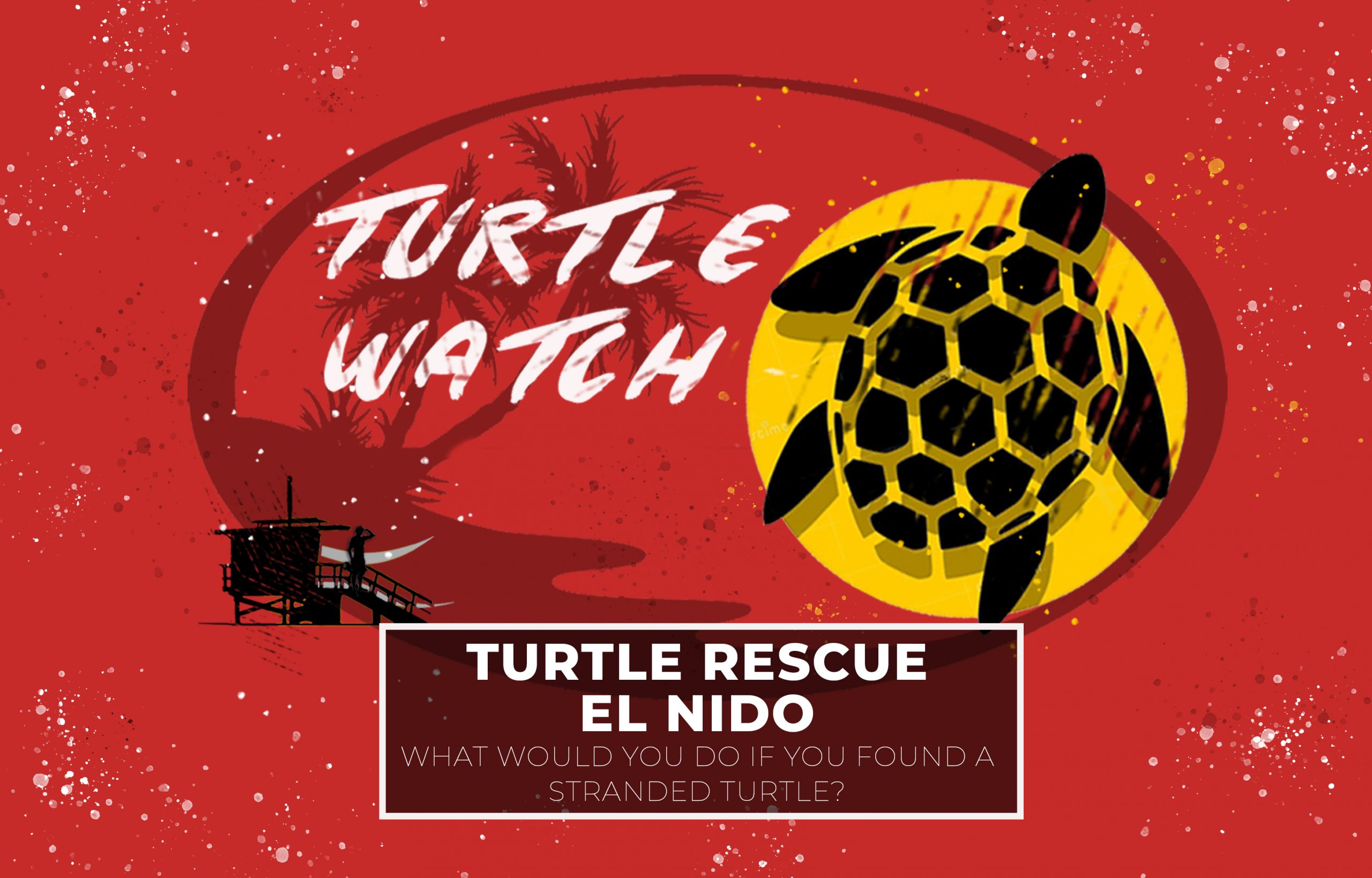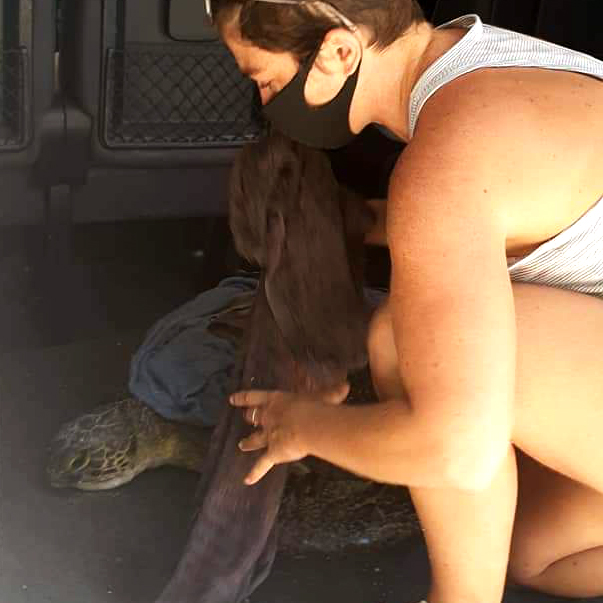
“As I sat down to my second coffee of the morning, I received a phone call from my friend saying they had found a stranded turtle on the beach, my first thought was ‘I have to do something!’ ”
“As I sat down to my second coffee of the morning, I received a phone call from my friend saying they had found a stranded turtle on the beach, my first thought was ‘I have to do something!’ ”
It was a normal day for Fisheye Co-owner Pauline as she sat down to do some online work and enjoy a second coffee, then the phone call arrived from Coron corong beach where her friend Yes had just found a turtle. Apparently some people saw it floating on the surface for quite a while and decided to bring it back to the beach, as weak injured turtles struggling at the surface can eventually drown from exhaustion.
When working in the diving industry it can be quite easy to be seen as the “ocean person” by your none diving friends. Therefore you are the one they expect to have the answers.
Hey ocean person; when is high tide today?
Hey ocean person; do we really have to pee on our friends because of a jellyfish sting?
Hey ocean person; we just found a stranded turtle what should we do?
Some of these questions are easy to find out, but some really do need the advice of an expert.
Talking to Pauline:
Who did you call for tips of what to do?
I directly called Jamie Dichaves, the sustainability officer at Lio Estate. We filmed a video with her last month about a small turtle rescue so I knew she would know exactly what to do
What did they say?
She said to take some towels, wet them and put them on the turtle to keep her cool and hydrated, to measure the turtle, send her the measurements and to keep her head up.

When she arrived at the beach (with towels) Pauline found a few people including some from the PCSD (Palawan Council for Sustainable Development). They moved the turtle into the shade.
With the assistance of some very helpful volunteers the group of turtle enthusiasts managed to get the turtle to an area where they could load it into a van, with Pauline holding its head up to ensure it could breath they managed to get it to Lio estate.

Why can't I touch the aquatic life?
It is true and for good reason that “please do not touch the animals” is taught (or should be) in dive centres and tour operators around the world. We are guests in the ocean, and also we as humans have some damaging toxins in our skin. Touching any kind of animal or coral will damage and potentially infect the animal. So please, resist the temptation, unless it is absolutely necessary (like a rescue scenario).
How did it feel holding a turtle after being in the dive industry and having “Don’t touch the animals” trained into you?
That was so weird !!!! At first I was like, “Am I allowed to touch it?”, “How am I supposed to touch it?”, “I am so scared!” But we really had no choice! It felt very slimy haha
When tired and / or injured, turtles can sometimes struggle to lift their heads up for a long time, if you think about it, they normally only lift their heads to breathe for a short time, when they pop their heads out of the water to inhale a few times and then dive back down to enjoy the underwater world.
When the van arrived in Lio there was a team preparing a pool for the turtle and Jamie arrived shortly after. They gave the turtle a few injections and then simply had to wait for the turtle to stabilise to be able to assess.
The team is now assessing the condition of the turtle and fingers crossed it will be ok!!
I wanted to take this opportunity to tell you some information we received from Jamie about finding a stranded turtle:
“Absolute No No’s”
- Never lift/carry by the flippers – it could fracture/dislocate the joints. Only lift through the carapace or place a cloth underneath the plastron to lift from both sides
- Never place the turtle on its back – it can compress the lungs, which may cause damage or make the turtle uncomfortable/have difficulty to breathe
- Never yank swallowed nylon out – it might be attached to a hook, which can rapture the esophagus/GIT as you pull out
- Do not touch turtles with possible fibropapillomatosis (FP) (turtle disease)
- Never leave weak turtles in water – it can cause drowning
- Do not rush transport, especially if it will entail bumpy rides – this can cause too much stress and internal damage to the turtle
Whats the difference between a stranded turtle and a turtle laying eggs?
- Nesting usually happens between night time and wee hours of the morning
- Turtles looking to lay eggs can be seen crawling on sand or are digging with their hind legs
- Turtles presently laying eggs have a hole dug in the area of the cloaca where eggs are deposited. They also make intermittent loud breathing sounds
Whats the number for people to call if they find one (In El Nido)?
- 09105690511 or 09464092514
What can people do in other areas that find stranded turtles / life?
- Contact PCSD (within Palawan), local DENR/BFAR or any wildlife-related NGO in the area (LAMAVE, RARE, C3, Marine Wildlife Watch of the Philippines, etc.)
We hope you find this article interesting and full of useful information and tips.
If in doubt, call someone and they can give you instruction and we can try to help our aquatic friends who are in trouble
Here is the small movie we made with Jamie about the successful rehabilitation of a smaller turtle in the area. If you have 5 minutes spare… Cheers!